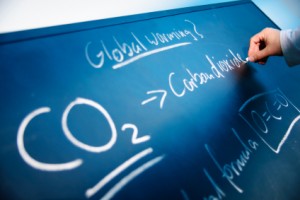 WASHINGTON, D.C. – In spite of recent scientific reports that reveal the mean temperature of the planet has remained unchanged for approaching two decades, the President continues to trumpet the party line about global warming.
WASHINGTON, D.C. – In spite of recent scientific reports that reveal the mean temperature of the planet has remained unchanged for approaching two decades, the President continues to trumpet the party line about global warming.
At a press conference yesterday, Mark Landler, a journalist for the New York Times, asked the President about global climate change.
“Mr. President. In his endorsement of you a few weeks ago, Mayor Bloomberg said he was motivated by the belief that you would do more to confront the threat of climate change than your opponent. Tomorrow you’re going up to New York City, where you’re going to, I assume, see people who are still suffering the effects of Hurricane Sandy, which many people say is further evidence of how a warming globe is changing our weather. What specifically do you plan to do in a second term to tackle the issue of climate change? And do you think the political will exists in Washington to pass legislation that could include some kind of a tax on carbon?”
The president was quick to reply that he is a “firm believer that climate change is real … impacted by human behavior and carbon emissions.” The president continued:
“You know, as you know, Mark, we can’t attribute any particular weather event to climate change. What we do know is the temperature around the globe is increasing faster than was predicted even 10 years ago. We do know that the Arctic ice cap is melting faster than was predicted even five years ago. We do know that there have been extraordinarily — there have been an extraordinarily large number of severe weather events here in North America, but also around the globe.”
“And I am a firm believer that climate change is real, that it is impacted by human behavior and carbon emissions. And as a consequence, I think we’ve got an obligation to future generations to do something about it.”
President Obama then spoke to what he had done in his first term to help curb carbon emissions, such as the new CAFE standards on cars and trucks, as well as clean energy productions.
“Now, in my first term, we doubled fuel efficiency standards on cars and trucks. That will have an impact. That will rid a lot of carbon out of the atmosphere. We doubled the production of clean energy, which promises to reduce the utilization of fossil fuels for power generation. And we continue to invest in potential breakthrough technologies that could further remove carbon from our atmosphere.”
“But we haven’t done as much as we need to. So what I’m going to be doing over the next several weeks, next several months, is having a conversation, a wide-ranging conversation with scientists, engineers and elected officials to find out what can — what more can we do to make short-term progress in reducing carbons, and then working through an education process that I think is necessary, a discussion, the conversation across the country about, you know, what realistically can we do long term to make sure that this is not something we’re passing on to future generations that’s going to be very expensive and very painful to deal with.”
As was reported in October here at Off the Grid News, today’s scientific community isn’t as unanimous as we are often led to believe about global warming.
Professor Judith Curry, chair of the School of Earth and Atmospheric Science at Georgia Tech University says, “new data confirms the existence of a pause in global warming. Climate models are very complex, but they are imperfect and incomplete. Natural variability [the impact of factors such as long-term temperature cycles in the oceans and the output of the sun] has been shown over the past two decades to have a magnitude that dominates the greenhouse warming effect. It is becoming increasingly apparent that our attribution of warming since 1980 and future projections of climate change needs to consider natural internal variability as a factor of fundamental importance.”
In spite of the need for honest discussion, the president and the New York Times reporter perpetuate a myth that hurricanes like Sandy are the result of global warming. Hard scientific evidence, however, shows that the pattern of hurricanes is cyclical and directly connected to shifting patterns of ocean temperature.
 Off The Grid News Better Ideas For Off The Grid Living
Off The Grid News Better Ideas For Off The Grid Living



